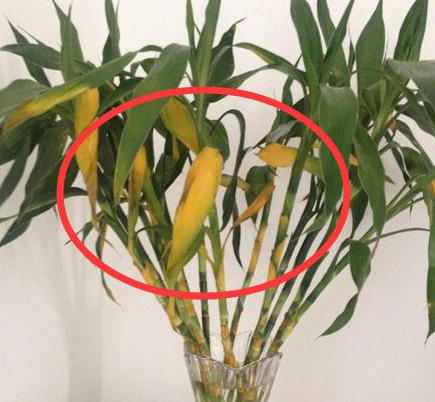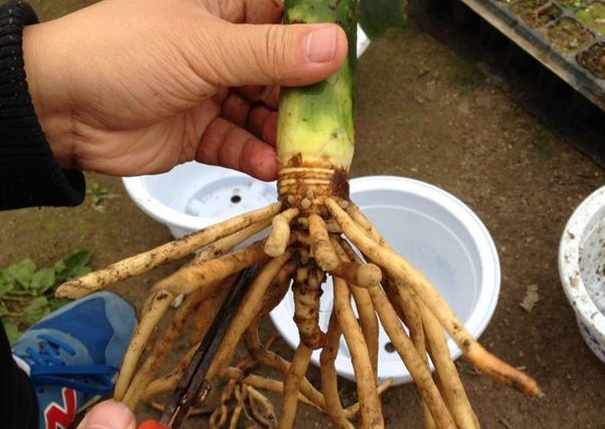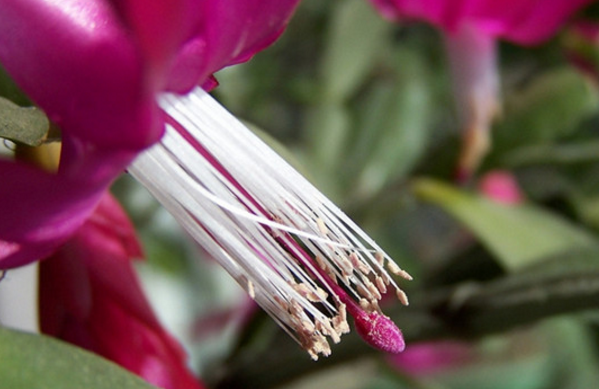What if the leaves of rich bamboo turn yellow in winter? some sand in a glass container?
When it comes to this rich bamboo, many people like to raise it. This rich bamboo is super good-looking, generally hydroponic, and the training method is super simple. Let's take a look at how the leaves of the rich bamboo turn yellow in winter:

1. It is very simple to cut off the roots of the newly bought rich bamboo about 2 centimeters with a fruit knife, and then peel off the outer layer of the bamboo.
2. Add a little soil and a layer of coarse sand to the bottom of the glass container. According to the proportion of 1:1, put the pruned rich bamboo in, and add water to about half of the container.
3. Maintain the astigmatism ventilation place and throw an aspirin into it before it takes root. It will not be used after it takes root.
4. After taking root, put an iron nail into the bottle, pour good water, and take care of the dead leaves in time. You can live for a long time, and the water quality is fine, more than 5 years.
It is relatively cold in winter, so you should pay attention to keeping the rich bamboo warm. If you put it in a place with air conditioning, it will grow green.
What to do about wilting and yellowing of rich bamboo stalks? six causes and solutions
What to do about the yellowing of 6 kinds of rich bamboo stalks? 1. Yellowing caused by no change of water
Rich bamboo stem yellowing, if it is very long without changing water for rich bamboo, resulting in the reproduction of bacteria in the water, causing rotting roots in some plants, thus affecting the water absorption of some plants and causing the stems to turn yellow.
What to do
Take out the yellowed bamboo stalks, then wash the roots and cut off the rotten roots.
B, the other thing is to throw away the yellowed poles, and then re-tie the remaining poles and insert them into the fresh water.
C, waiting for it to root again, you can put a small piece of charcoal in the water, add a little hydroponic plant nutrient solution, or put a little ferrous sulfate, or one or two rusty nails to supplement it with iron, which will make the leaves greener.
2. Lack of water causes pole yellowing.
If the basin soil of Fugui bamboo is too dry or there is a lack of water in the aquaculture container, it will also lead to the yellowing of leaves and stems one after another.
What to do
Water the rich bamboo in time, when the temperature is suitable for 20-28 degrees, the rich bamboo should be watered once a week. When the rich bamboo sees the lack of water in the container, it needs to add water in time.
3. the pole is yellowed by exposure to the sun.
Rich bamboo is afraid of the sun, in summer do not pay attention to shade maintenance, direct outdoor exposure to strong light, rich bamboo leaves and poles will be sunburned, causing burning yellow.
What to do
Timely move the rich bamboo to a cool and ventilated place to maintain for a period of time, if the pole is slightly yellowed, it may turn green, if the sunburn is scorched yellow, it is recommended to remove the yellowing pole as soon as possible, and maintain the rich bamboo pole that has not yet yellowed.
4. Lack of fertilizer causes pole yellowing.
Flower friends are raising rich bamboo, if only know how to water, never fertilize, then the growth of rich bamboo can not get sufficient nutrients, nutrients can not keep up with the leaves and stems of rich bamboo will have symptoms of yellowing.
What to do
According to the actual growth situation of Fugui bamboo, fertilizer can be applied every 30 days on average, moderate fertilization can keep the stem green and strong for a long time, or add appropriate amount of nutrient solution.
5. The big temperature difference causes the pole to yellowing.
Generally, in winter, rich bamboo needs to be kept indoors at 6 ℃-8 ℃. Only in this way can it survive the winter safely. If the room temperature is too low or if it is cold outside and then moved into a shaded cold room, the stem will gradually wilt and yellowing, and some will wilt the whole plant and cause the stem to rot and die. In addition, if the rich bamboo bought in winter does not have roots, its stalks are also easy to turn yellow because of low temperature.
What to do
A. If it is found that there is a withered stem, it should be pulled out immediately, and its space can be replaced by the insertion of undried plants.
B. Keep the room with light at the lowest room temperature of 6 ℃-8 ℃. In case of low temperature, cover the basin with a 2-layer plastic bag and keep away from the glass window at night.
C. Pay attention to add water to prevent dryness. 7 change warm water once every 10 days. Fertilization should be stopped during the winter.
6. Yellowing of poles caused by normal aging
If the roots and leaves of Fugui bamboo grow well and the stems turn yellow, it belongs to the phenomenon of plant aging.
What to do
It shows that your rich bamboo may be some years old, flower friends can directly cut off the yellowing poles, and then cut and propagate new rich bamboos.
How to transport bamboo leaves yellowing how to transfer bamboo culture methods and matters needing attention
Many people bought transfer bamboo, encounter transfer bamboo leaves yellow do not know what to do, the following to tell you about transfer bamboo culture methods and matters needing attention.
Culture methods of transferred bamboo:
The culture method of transferred bamboo is basically the same as that of Fugui bamboo, but more effort is needed in modeling. Transporting bamboo likes a warm, moist and shady environment. The suitable temperature for growth is 20-30 ℃, so the high temperature season in summer and autumn in the south is very beneficial to its growth. When the winter time is less than 10 ℃, the leaves of the transported bamboo will yellowed and fall off.
Bottle transfer bamboo with overnight tap water or cold boiled water is better, every 10-15 days, only need to pour half, add half, otherwise the root system will not adapt. Nutrient solution may cause root rot of transported bamboo, so it is not recommended to add it.
Transferred bamboo likes the high temperature environment, so the water temperature of culture should be higher, and the lowest temperature should not be lower than 20 degrees Celsius. The requirements for water quality are also on the high side, and the water quality of aquaculture must be kept clean, otherwise it is easy to have rotten roots. Before it takes root, you can change the water for the transferred bamboo once a week. When changing the water, rinse the bottom with clean water and clean the culture container.
Many people will encounter the situation that the height of the transferred bamboo bought does not match the container at home, which requires root cutting. Root cutting is fastidious, and the correct way is to use a sharp knife (preferably sterilized with alcohol first) to cut flat half a centimeter below the transfer bamboo nodule, because this position is the easiest to take root. Strong growing plants should be selected when transporting bamboo bottles for water culture, paying attention to intact leaves, straight branches and intact terminal buds.
The culture method of transferring bamboo:
The main points to be mastered in water-fed transfer bamboo are as follows: remove the leaves at the base of the cuttings before entering the bottle, and cut the base into a 45-degree oblique edge with a sharp knife, and the knife edge should be smooth to increase the absorption area of water and nutrients. Kept in straight tube glassware with a water depth of about 5 to 10 cm. Every 3-4 days, change the water, can put in a few pieces of charcoal antiseptic, do not move within 10 days and change direction, about 15 days can grow silver white fibrous root. The transferred bamboo stops changing water after rooting, and after the moisture content is reduced, it can be added in time, if the water is changed frequently, it is easy to cause leaf yellow and wilt. After rooting, a small amount of light was given and a small amount of compound nutrient solution was dropped, and then the nutrient solution was applied every 3 weeks.
1. Water quality requirements: transferred bamboo should not change water after rooting, and water can only be added in time after water evaporation. Often changing water is easy to cause yellow leaves and branches to wilt. The added water is best to use well water, tap water should be stored in utensils for a day, the water should be kept clean and fresh, do not use dirty water, hard water or mixed with oily water, otherwise it is easy to rot roots.
two。 Fertilization requirements: water-raised transfer bamboo in order to prevent excessive growth, do not apply chemical fertilizer, it is best to inject a few drops of brandy into the bottle every 3 weeks or so, add a small amount of nutrient solution; you can also use 500g water to dissolve half a piece of aspirin or VC into powder, add a few drops when adding water, that is, you can keep the leaves green.
3. Put an end to the wind: do not put the transfer bamboo next to the TV set or where air conditioners and fans often blow, so as to avoid leaf tip and leaf edge drying up.
Matters needing attention in transferring bamboo culture:
The first is the problem of water quality, which mainly depends on whether the roots of transferred bamboo are fresh or not. if the roots are rotten, they should be cut off and switch to cold boiled water. When the symptoms are serious, pesticides should be sprayed properly or a small amount of fungicide should be added to the water plate.
Second, it is caused by environmental conditions, such as too dark light, hot and unventilated, dry air and so on. If for light reasons, first cut off the yellow leaves to create a clean, warm, cool, moist and better environment with scattered light. When there are bamboo branches rotten, loosen the banding of the transferred bamboo, pick out the rotten ones, re-bind them, and make them recover step by step.
What about the yellowing of bamboo leaves?
1. The soil is yellowing caused by alkalinity. Transfer bamboos like acidic soil. If the soil is alkaline, the leaves will turn yellow. It can be sprayed with alum fertilizer and water, and the leaves will get better.
2. Yellowing of leaves caused by excessive fertilization. Although the transferred bamboo has strong fertilizer tolerance, excessive fertilization will also cause the yellowing of leaves. The specific performance is that the new leaf tip appears dry brown, the old leaf tip is dry and yellow and falls off, although the general leaf surface is thick and shiny, but most of them are uneven. At this time, we must stop fertilizing, reduce the number of fertilizers, and irrigate with more clear water.
3. Yellowing of leaves caused by lack of fertilizer. If you often do not apply fertilizer and only water or do not change flowerpots for several years, the roots of transferred bamboos will knot together, resulting in malnutrition and yellowing of leaves. At this time, it is necessary to apply appropriate amount of fertilizer, or change flowerpots and trim the roots.
4. Yellowing of leaves caused by low temperature. Transfer bamboo leaves will turn yellow in the environment below 10 °, so transfer bamboo should pay attention to keep warm in winter, do not put it outside or by the window, but also pay attention to the temperature should not be too high, too high will also turn yellow.
5. Yellowing caused by exposure to the sun. The transferred bamboo likes to be wet and hot, and if it is exposed to the sun for a long time, it will cause the leaves to turn yellow. As long as you move it back to the shade, it will get better after a while.
More information
- Prev

Under what circumstances does the gentleman orchid give birth to rotten roots?
Speaking of this gentleman orchid, this is a lot of people like breeding, under what circumstances does this gentleman orchid give birth to children? How to do the rotten roots of Cymbidium: 1. After removing the basin, clean the roots first, thoroughly disinfect them, soak them with potassium permanganate solution 2, re-pot them, and choose plain soil or pine needles to take root. 3. After putting on the basin.
- Next

The fairy refers to the reason why it doesn't blossom.
Cactus refers to, also known as cactus branch, Candle Festival cactus, beautiful plant shape, beautiful flowers and colors, high ornamental value, is an ideal pot for indoor breeding. Fairy refers to how to raise fairy finger culture method: temperature, the suitable growth temperature of fairy finger is between 19-32 ℃, and the suitable temperature in winter is 7-13 ℃.
Related
- Fuxing push coffee new agricultural production and marketing class: lack of small-scale processing plants
- Jujube rice field leisure farm deep ploughing Yilan for five years to create a space for organic food and play
- Nongyu Farm-A trial of organic papaya for brave women with advanced technology
- Four points for attention in the prevention and control of diseases and insect pests of edible fungi
- How to add nutrient solution to Edible Fungi
- Is there any good way to control edible fungus mites?
- Open Inoculation Technology of Edible Fungi
- Is there any clever way to use fertilizer for edible fungus in winter?
- What agents are used to kill the pathogens of edible fungi in the mushroom shed?
- Rapid drying of Edible Fungi

